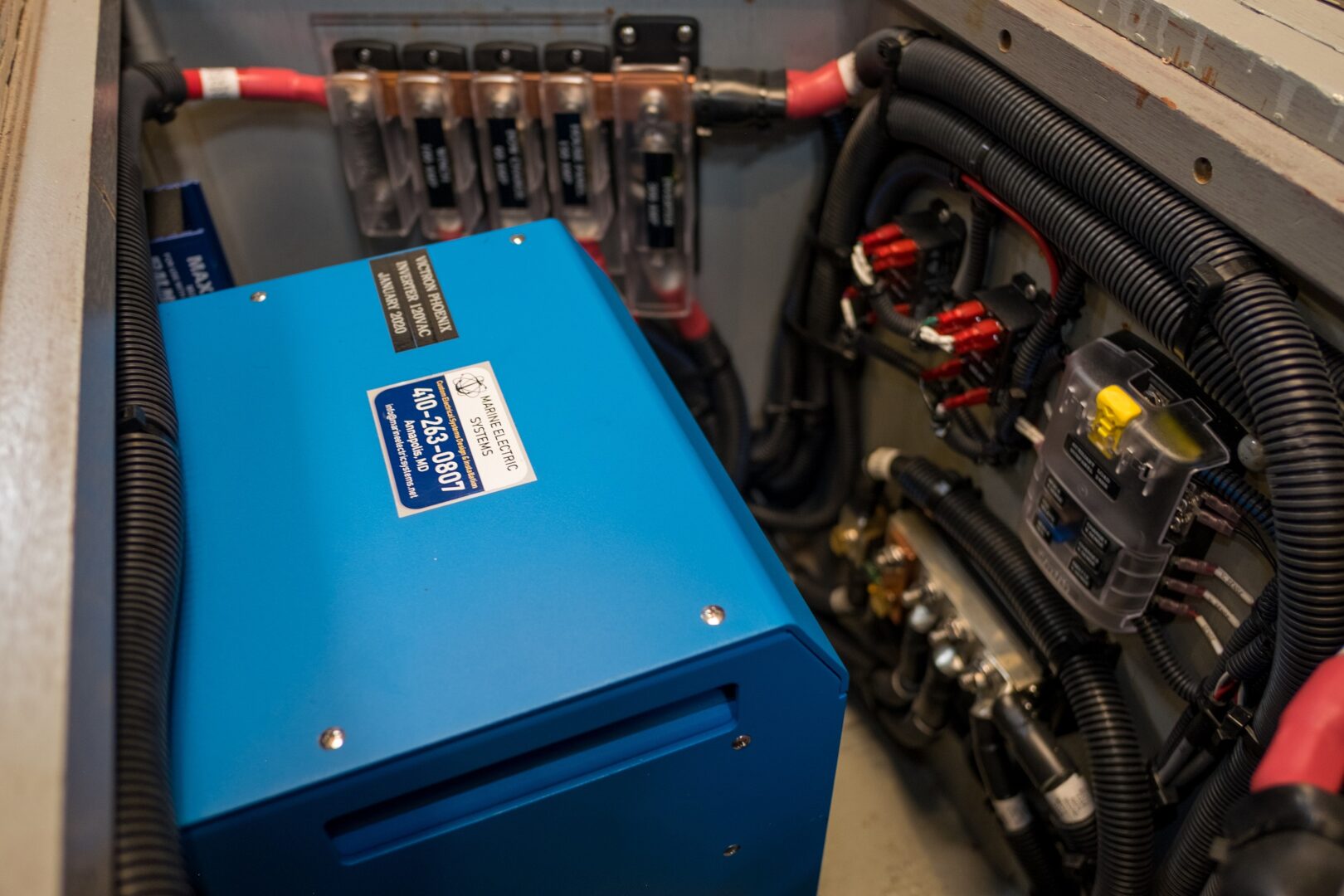
Let’s go over the process of installing a marine battery that is appropriate for your electrical needs.
All electronics on your boat need power; typically, this power comes from a marine battery. However, each vessel has different battery requirements depending on the amount of required power, the size of the ship, etc. Some boats will have multiple batteries, while others may only have one. No matter how many electronics you have, you need to know how to install your marine batteries properly. Let’s go over the process of installing a marine battery that is appropriate for your electrical needs.
What is a Marine Battery Bank?
A battery bank is where multiple batteries are housed in the same location. It is common for larger boats to have multiple battery banks, while others use fewer banks but are larger in size.
The first battery in the bank is the boat’s starter battery. This battery has a reliable, high rate of discharge that starts the motor. Running devices off this battery will reduce its lifespan and reduce its effectiveness. Given how critical the starting battery is to survival, it should be a completely separate entity, only used to get your motor running in harsh conditions.
The second battery is the house battery. It powers the various devices onboard. Most vessels are fine with a 12V deep-cycle battery, though a 24V setup might be best if you have heavy equipment or a lot of devices to run.
Mounting Your Battery
You should mount your marine battery in a safe, dry, accessible location should maintenance be required. Install the battery near an onboard vent, as wet cell batteries discharge hydrogen gas, and the last thing you want is an electrical fire.
Also, don’t mount the battery above or below anything related to the fuel system, such as fuel tanks or filters. It shouldn’t move at all when mounted. A lot of power can be stored in a battery, and a short circuit can be devastating. The batteries should be firmly tied down, and the terminals should be protected from the elements.
Inspect the Battery Terminal
The battery terminals are where the main wires connect the batteries to the electrical system. The terminals should be corrosion-free and tightly connected to the battery connections. If you’re worried about corrosion, you can grease the terminals to protect them. The terminal connection should be tight, with the heavy-duty connecting wires having only a short span. The rest of the heavy-duty cable run should be equally well secured to prevent movement.
Marine Electric Systems, LLC is a Leader In the Maritime Industry
We here at Marine Electric Systems have over 30 years of industry experience. You can trust our team for reliable service and expert craftsmanship in the Maryland, Baltimore, Annapolis, and Baltimore city areas! We’re highly certified and adhere to all ABYC and NMEA regulations. We specialize in top-notch electrical solutions for recreational, commercial, and government boating clients. Anything from electrical refits, to navigation systems, or boating maintenance. To stay up to date on our services, follow us on Facebook, LinkedIn, Pinterest, Instagram, and YouTube. You can also contact us at 410-263-0807.
